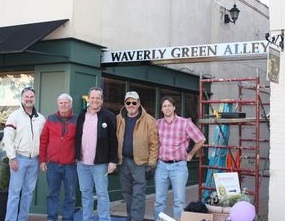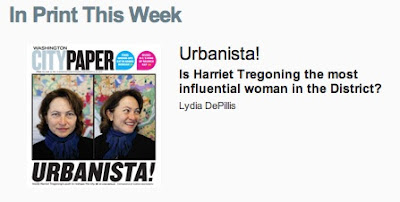The recently announced
HPO DC alley survey is documenting scores of alley structures that have contributed to the history of the city's development. Many are stables, others are warehouses or former shops. This survey project is a huge step forward in preserving DC stables and many other salvageable structures. Kimberly Williams who is in charge of the survey was recently quoted in
Urban Turf as saying: "We are finding stables, carriage houses, artist studios, industrial buildings and private and commercial garages. We see a lot of old advertising on the walls that you don't find on main city streets anymore." Discussions about alleys have recently become hot topics in urban planning in a number of cities. One gets the sense that many in this city have become tired of the glacial glass and steel cubes of K Street and are longing for something entirely different architecturally.
In the course of preserving DC stables and other architectural oddities in DC alleys, one is struck by the realization that the act of preserving these buildings ultimately preserves, renews and restores the alley itself.
For many reasons, foremost of which are crime, garbage storage and service access, alleys have been literally and figuratively out of sight and mind of most urban planners. Consequently over the last 70 years, laws and codes were created that actually made it very difficult to live in DC alleys even when properties were available. New construction in these alleys was verboten - especially in the narrow sections. The
new codes for the city will breathe new life into the languishing alleys of the city.
Personal time has become very precious to people. The costs of increasingly tedious commutes in terms of personal time and automobile running costs have become too high a price for many to pay. Over the past 4 years people have been moving back into D.C. by the thousands, looking for a better quality of life that includes more personal time in which to enjoy the spectrum of D.C. living. With a fixed 12 mile radius and a height restriction increased density of living comes through (a) the development of dead and decaying blocks and squares (b) renovation and restoration of boarded up structures that are still structurally sound and (c) exploration of alley living options.
A small number of cities in the US are already well on the way to rescuing and constructively harnessing their alleys. Much of this effort is taking place one alley and one individual at a time. A really touching story of a young girl (Madeleine) who is on a crusade to beautify the alley where she lives with her parents is
in this blog.
Once something is named it instantly becomes humanized. There is a sense of anthropomorphism. For example, once a feral cat has a name, there is an inclination to feed it and generally care for it that may not have existed when it was just another alley cat.
D.C. alleys have fabulous names that should be made highly visible so that passers by begin to feel a little kinder about them and respect them and their legacy a little more.
One community in Madison is already doing this.

DC Streets were boringly named alphabetically (A Street) and numerically (1st Street) and by quadrant (NW) and by State (Massachusetts) whereas the alley names reflected real life and day-to-day living. They recalled the names of real people who contributed to the neighborhood. Some were simply colorful and needed no explanation at all such as "Goat Alley" and "Blood Alley" and "Blues Alley." Alleys are the arterioles of a city and need to flow with pedestrian traffic, bicycles and renewed pulsations of life.




